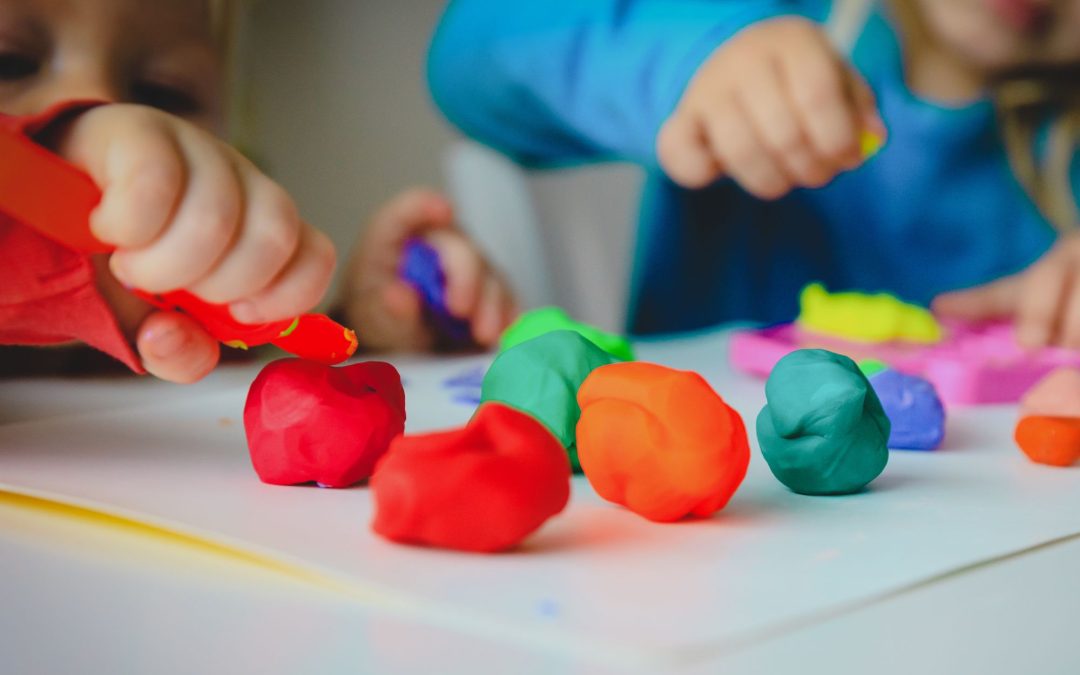Playdough is more than just a fun activity for kids; it’s a versatile tool that offers a multitude of benefits for their development. From sparking creativity to enhancing fine motor skills, playdough is a fantastic addition to any home. Let’s explore the many advantages of this beloved material!
1. Unleash Imagination with Endless Possibilities
One of the most exciting aspects of playdough is its limitless potential for imaginative play. Children can create anything from animals and vehicles to entire worlds filled with characters. By adding animal figurines, straws, or little people, you can watch your child’s creativity soar as they invent stories and scenarios. This open-ended play encourages them to think outside the box and develop their imaginative skills.
2. A Gateway to Sensory Play
Introducing sensory play into your home is easy with playdough. The texture, smell, and colors provide a rich sensory experience that can be enhanced by adding essential oils. This not only makes the play more enjoyable but also helps children explore their senses. Sensory play is crucial for young children as it fosters cognitive development and helps them understand the world around them.
3. Build Hand Strength and Fine Motor Skills
Manipulating playdough is an excellent way for children to build hand strength and improve fine motor skills. As they roll, squish, and shape the dough, they develop the small muscles in their hands and fingers, which are essential for tasks like writing and buttoning clothes. This hands-on activity is not only fun but also incredibly beneficial for their physical development.
4. Enhance Language Skills Through Play
Playdough can also serve as a fantastic tool for practicing language skills. Encourage your child to describe how the playdough feels, looks, or smells. Ask them to narrate the creations they make or to explain what they are building. This dialogue fosters vocabulary development and helps them articulate their thoughts and ideas.
5. Early Academic Learning Made Fun
Playdough is a playful way to practice forming and identifying shapes, numbers, and letters. You can use cookie cutters or mold the dough into various shapes, encouraging your child to recognize and name them. This hands-on approach to learning makes it easier for children to grasp these concepts while having a blast.
6. Involve Your Kids in the Creation Process
Making playdough is a simple and engaging activity that you can do together with your children. Involving them in the process of measuring and adding ingredients allows them to practice reading instructions and following directions.
Ready to try it out? Here’s a quick and easy recipe to get started:
Easy Playdough Recipe
Ingredients:
1 cup all purpose flour
2 teaspoons cream of tartar
1/3 cup table salt
1 cup water food coloring
1 Tablespoon vegetable or canola oil
Directions:
1. Add flour, cream of tartar and salt to a medium sized saucepan.
2. Add a few drops of food coloring to your water.
3. Add your colored water and oil to the saucepan.
4. Heat your mixture on medium/low heat and stir until the play dough starts to solidify. It should form a ball around your spoon. It may be lumpy, that’s okay!
5. Remove your play dough from the stove and set on waxed paper or plate to cool.
6. Once your play dough is cool you can squish and knead it to work out any lumps or remaining stickiness. Play dough can be stored for 2-3 months in a ziplock bag or air tight container.
Find a free printable version of this recipe at: https://www.citherapies.com/printables-and-activities/
Conclusion
Incorporating playdough into your child’s playtime routine offers a wealth of developmental benefits. From enhancing fine motor skills and language development to sparking creativity and sensory exploration, playdough is a versatile tool that can enrich your child’s learning experience. So gather your ingredients, whip up a batch of homemade playdough, and watch as your child’s imagination and skills flourish!

